#wwii inventor
Explore tagged Tumblr posts
Text


This is a colourization I did of actress and inventor Hedy Lamarr. There is too much to summarize about her life, so I urge you to read the Wikipedia article about her: https://en.wikipedia.org/wiki/Hedy_Lamarr
I got the original b+w from Wikimedia: https://commons.wikimedia.org/wiki/File:Hedy_Lamarr_Ziegfeld_Girl.jpg
#colorization#colorized#history#hedy lamarr#actress#hollywood#old hollywod glamour#old hollywood#inventor#wwii inventor#stateless person
43 notes
·
View notes
Text

Bell XP-59A. The first U.S. turbojet Aircraft, powered by General Electric J31, was derived from Frank Whittle's turbojet and sent to the U.S. in great secrecy in 1941. ➤VIDEO: https://youtu.be/I0Rf8_navA4 ➤TURBOJET VIDEOS: https://dronescapes.video/Turbojet
#youtube#aircraft#airplane#aviation#dronescapes#documentary#military#aviation history#ww2#wwii#Bell#Bell XP59#lockheed f 80#lockheed p 80#lockheed#sir frank whittle#frank whittle#general electric#J31#Jet Age#turbojet#inventor#aircraft engineering#engineering
49 notes
·
View notes
Text
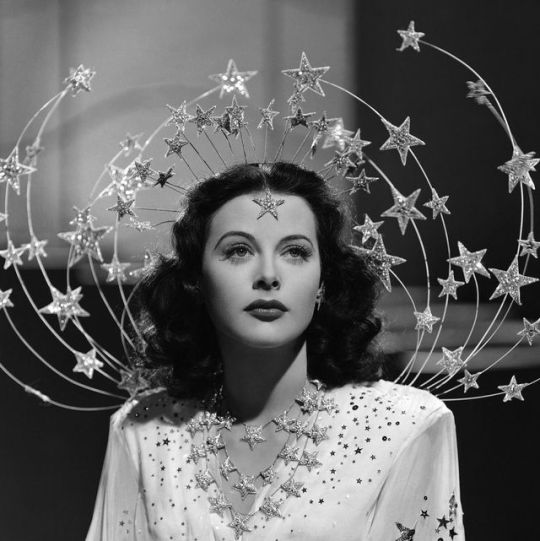

Propaganda
Hedy Lamarr (Samson and Delilah, Ziegfeld Girl)—Look. I'm sure someone has already submitted Hedy Lamarr because she was spectacularly beautiful, and a very strong lady too: she fled both an abusive marriage AND nazi persecution at a very young age and rebuilt a life for herself pursuing her love for acting all on her own!! Her career as an actress was stellar; while she began acting outside of Hollywood (her very first movie, Ecstasy, won a prize at the Venice Film Festival), she conquered American hearts very quickly with her first movie in the US, Algiers, and then just kept getting better and better. If all this isn't enough, she was also an inventor: her invention of the frequency-hopping spread spectrum radio transmission technique forms the base of bluetooth and has a lot of applications in all kinds of communication technologies. I think that deserves a prize, don't you?
Marilyn Monroe (How to Marry a Millionaire, Gentlemen Prefer Blondes, Some Like It Hot)— Ngl I thought you all were lying about sexual attraction until I saw Marilyn Monroe in Gentlemen Prefer Blondes
This is round 6 of the tournament. All other polls in this bracket can be found here. Please reblog with further support of your beloved hot sexy vintage woman.
[additional propaganda submitted under the cut.]
Hedy Lamarr:
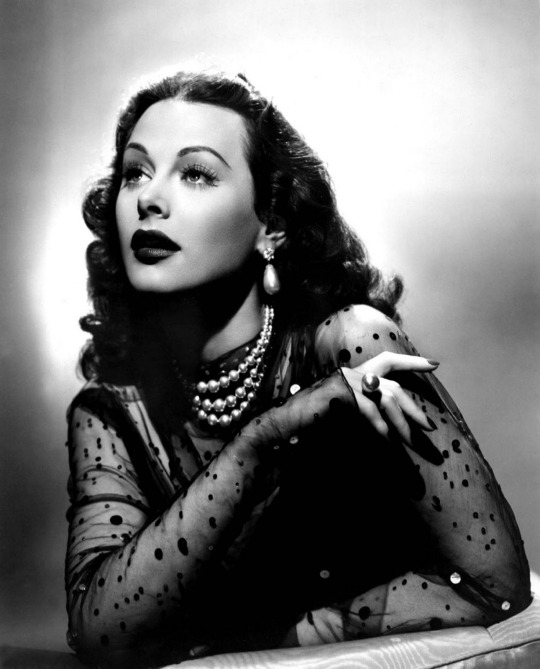
The only person you can find both on the Hollywood Walk of Fame and in the Inventor's Hall of Fame--her radio-frequency-hopping technology forms the basis for cordless phones, wi-fi, and a dozen other aspects of modern life. She was also passionate in her efforts to aid the Allies in WWII (unsurprising for a Jewish-Austrian Emigree to America), and her name served as the backbone for one of the best running jokes in what is possibly Mel Brooks' best movie. Look, Louis B. Mayer apparently believed he could plausibly promote her as "The world's most beautiful woman". Is an entire website full of people going to be less audacious than one Louis B. Mayer? I didn't think so!
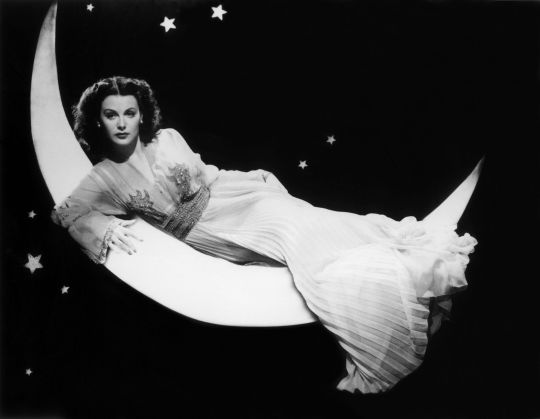
Described as "Hedy has the most incredible personal sophistication. She knows the peculiarly European art of being womanly; she knows what men want in a beautiful woman, what attracts them, and she forces herself to be these things. She has magnetism with warmth, something that neither Dietrich nor Garbo has managed to achieve" by Howard Sharpe, she managed to escape her controlling husband (and Nazi Germany) by a) Disguising as her maid and fleeing to Paris or b) Convincing the husband to let her wear all of her jewelry to a dinner, only to disappear afterwards. Also she was particularly clever and helped develop Frequency-Hopping Spread Spectrum (I can't really explain it but anyway...)
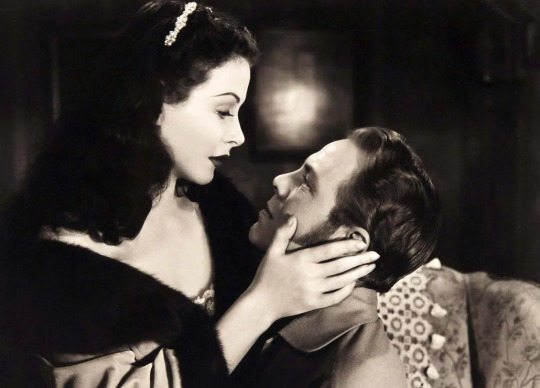
Her depiction of Delilah and Samson and Delilah just lives rent free in my head. The woman was gorgeous.
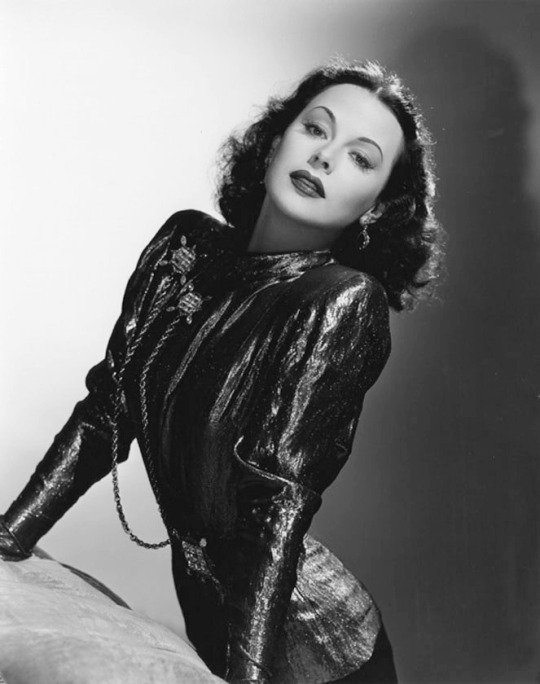
One of the most beautiful women ever in film, spoken by many critics and fans. Beautiful shapely figure, deeper seductive voice, and often played femme fatale roles. She was also brilliant and an inventor. Mainly self-taught, she invested her spare time, including on set between takes, in designing and drafting inventions, which included an improved traffic stoplight and a tablet that would dissolve in water to create a flavored carbonated drink, and much more.
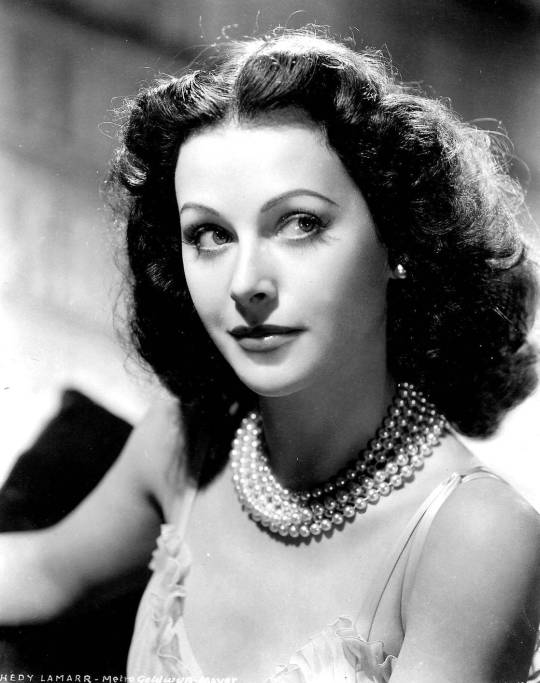
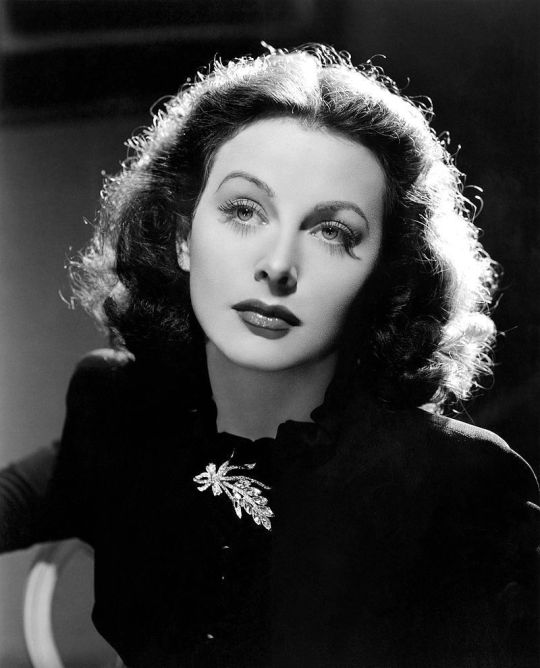
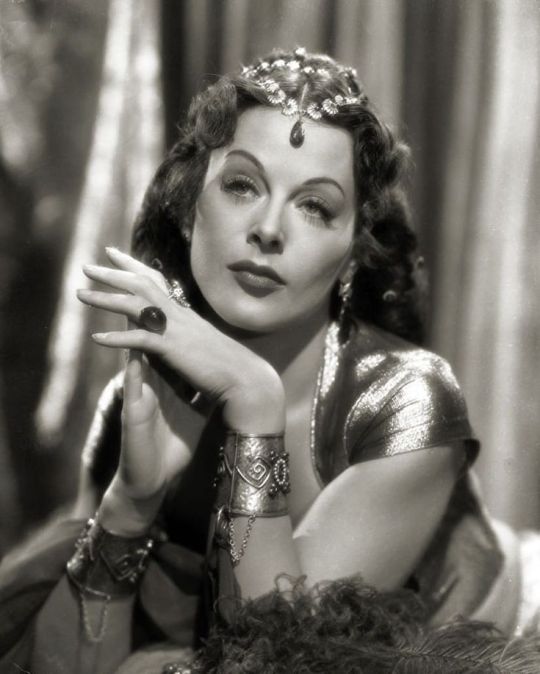
Gorgeous and brilliant pioneer of modern technology and the middle part.
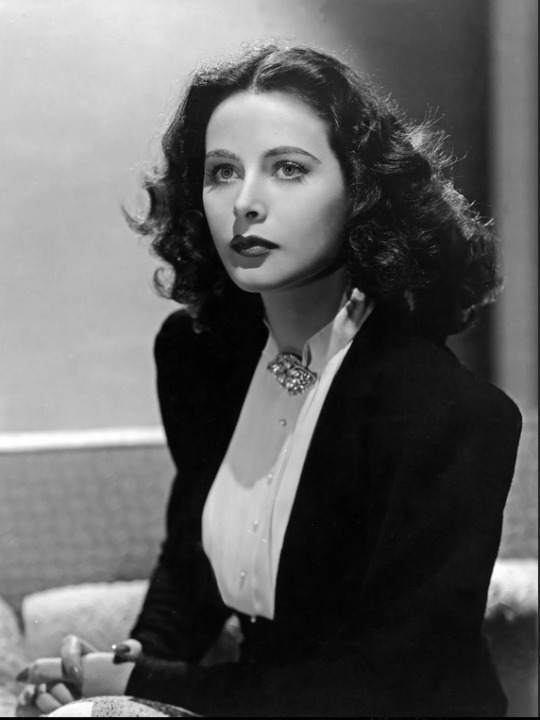
Marilyn Monroe:

She's amazing!!! A classic bombshell, as well as a strong women who overcame so many obstacles. She also advocated for others, like Ella Fitzgerald.
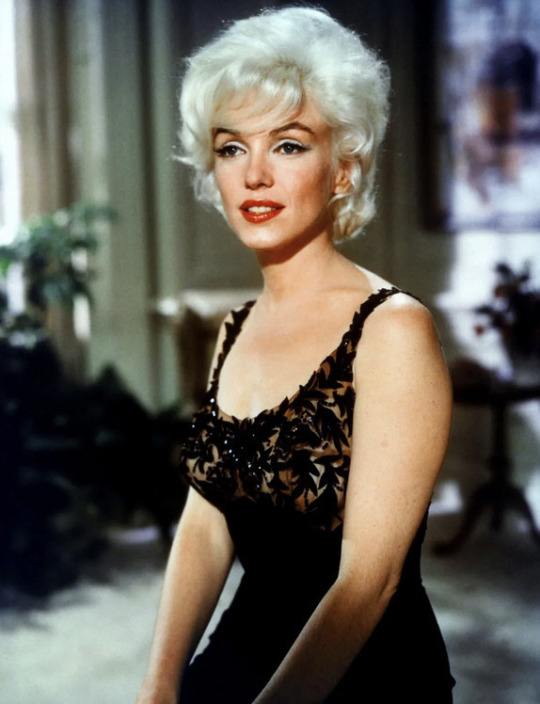
That fucking saxophone that cuts in whenever she appears on screen in Some Like it Hot
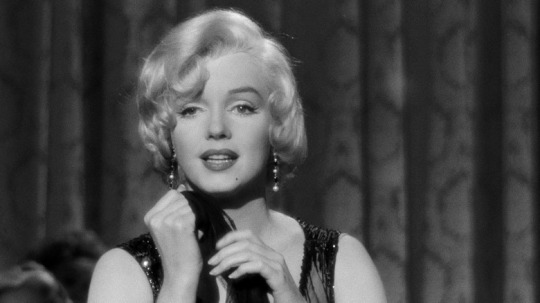
I mean, it's Marilyn Monroe. She's adorable. She's gorgeous. She funny. She's the total package

She's the original American sex symbol, an iconic beautiful woman with eyes you could get lost in, legs for days, gorgeous hair, and a cute tummy. Her voice! Just listen to her voice!!!!!
youtube
She is considered one of THE sex symbols of the 1960s and one of the greatest actresses of all time! She HAS to be on this list!

no vintage movie woman is more iconically hot
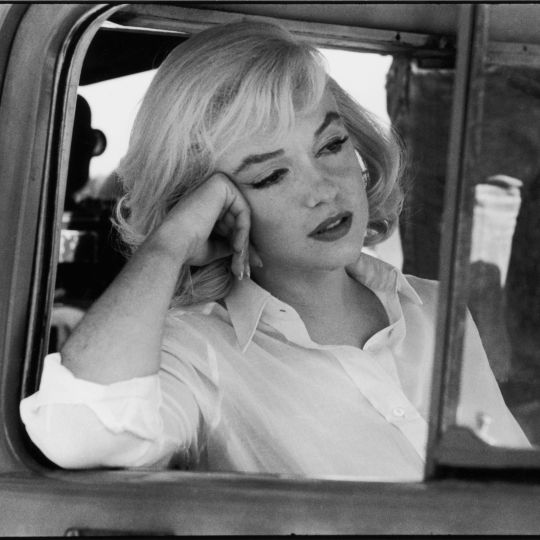
People are most familiar with pictures of her in the white dress or the Happy Birthday Mr President one, but imo she is at her most beautiful and looks most comfortable when she is photographed by women like Eve Arnold

It’s Marilyn Monroe. If Aphrodite was an actual person, she’d be Marilyn. Do I really need to say more?
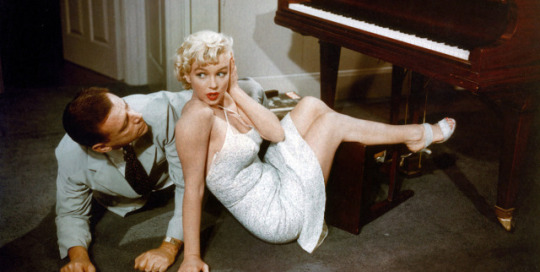
What can I say that hasn't been said? Marilyn's legacy is so much bigger than she was in life. She's a defining symbol of 50s and 60s Hollywood sex and it's obvious why. She was absolutely stunning and the camera loved her.

2K notes
·
View notes
Text

Hedy Lamarr was considered one of the most beautiful women in Europe. Born Hedwig Eva Maria Kiesler in 1914 to a Jewish family in Vienna, Austria-Hungary, she became a film star in Europe by the 1930s, and soon after, she achieved similar recognition in the U.S. In addition to her acting career, Hedy pursued inventing. Motivated to assist U.S. efforts during WWII, she focused on designing a radio guidance system for Allied torpedoes that would counter the threat of jamming. Although her innovation was not used during the war, the principles she developed are now integrated into modern technologies such as Wi-Fi, CDMA, and Bluetooth. On August 11, 1942, Hedy Lamarr was granted a patent for her revolutionary “frequency hopping communication system,” which forms the basis of much of today’s wireless technology. In recognition of her achievements, she was inducted into the National Inventors Hall of Fame in 2014.
humansofjudaism
91 notes
·
View notes
Text
🩸 THE ACCIDENTAL SAINT OF SUBURBIA (A Blacksite Literature™ Declassified Payload)
Let me tell you about a boy named Billy.

---
Not a warrior. Not a soldier. Not a chosen one. Just a decent kid from some Rockwellian zip code your grandmother still dreams about. Worked at a bank. Had a dog. Still lived with his folks.
And one night?
He was handed a creature.
Not a dog. Not a cat. A Mogwai — A furry little intelligence bomb with black eyes full of unspoken deals and tucked-in malice. Three rules, they said:
Don’t expose it to sunlight.
Don’t get it wet.
Don’t feed it after midnight.
Billy broke the last one.
And here’s the punchline: He didn’t even know he broke it.
Because the other evil furballs tricked him — Those demonic bastards unplugged the clock in his room. A cheap little con job. Because demons don’t just claw and bite.
They deceive.
And what hatched from that betrayal?
Not gremlins. Not “mischievous little guys.”
But literal 'get the fuck out of here' demons. Flesh-ripping, microwave-stabbing, stairlift-launching goblins with reptile skin and sadism baked into their giggle loops.
Stripe was the leader. Neon Mohawk. Razor teeth. The kind of imp you find in a medieval nightmare or a pagan story whispered by children who know they’re not allowed to speak of it out loud.
And Billy?
He didn’t run.
He stood the fuck up.
Why?
Because his dad — the charming failure of an inventor who brought the Mogwai home — had long since had his will broken by the quiet humiliations of suburban salesman life.
But Billy?
Billy still had something left.
A spirit. The kind that says: “If I have to kill every last one of these cackling lizard f*cks with a goddamn baseball bat and a flashlight, I will. Even if it takes a million years.”

Let’s not sugarcoat it.
Billy’s home life wasn’t a bastion of masculine competence.
His dad dropped off a time bomb and peaced out to another loser convention to sell toothpaste dispensers and orange juicers made from WWII scraps.
His mom?
Left in the house alone. When the gremlins hatched — upstairs — She didn’t scream. She didn’t faint. She survived. Microwaved one. Stabbed another. Tossed one into a goddam blender.
And still — even with PTSD clawing at her heels — she was going to die, had Billy not come home and literally golf-clubbed a demon’s head off its shoulders.
His own mother was about to be strangled to death by a giggling reptilian fairy with red eyes.
But Billy?
He showed up. In the nick of time. And he swung like a man who didn’t care about the blood. Only about the woman who raised him.
Add this in: Billy was also dealing with a girl.
You know the one. The melancholy, moody, soon-to-be girlfriend who looked like a sad indie lyric and talked like her diary was written in grayscale.
He was trying to smash with all the high-cringe efficiency of a teenage dork.
But she had baggage.
Oh, brother — she had a goddamn suitcase full of death.
Her origin story?
Let’s just say… she found out Santa wasn’t real because her dad’s corpse was gift-wrapped in the chimney. Tried to surprise the family, slip in like a Hallmark ninja with presents and cheer — broke his goddamn neck like a whole dumbass.
Sat there rotting for days, while the house stank of "mystery" and pine.
Merry. Fucking. Christmas.
Billy didn’t flinch.
He listened.
And maybe that’s the most mythic act of all — To hold space for a girl whose life was shaped by decay and never once call her crazy for bleeding words that stink of old ghosts.
This is what makes Billy holy.
Not that he was strong. Not that he was brave. Not that he won.
But that he stood when every card said fold.
That he picked up a golf club and went hunting through a fogged-up nightmare of mutated gremlins, exploding movie theaters, power outages, and puppets from hell.
Stripe made his final stand at a department store. Think about that: A neon-lit altar of American consumerism And what did he do?

---
Billy chased him. Cornered him.
And when the demon tried to spawn more of his brood in the garden fountain…
Billy didn’t hesitate.
He fried his scaly ass with a burst of sunlight and turned the devil into soup.
This wasn’t Harry Potter.
There was no wand.
This wasn’t Marvel.
No shield. No serum. No suit.
This was a young man with a mistake. And instead of whining, posting about it, or blaming society — he fucking atoned.
With bruises.
With grit.
With love that doesn’t get an Oscar.
Because the kind of man who destroys demons without being asked to is the kind of man they don’t make anymore.
🩸 Let’s Be Honest
Billy isn’t supposed to matter.
He wasn’t mythic. He wasn’t divine. He was an accidental saint.
But in a town overrun by hellspawn, with everyone else too busy fainting, dying, or hiding—
Billy did what the sacred do:
He didn’t run.
He remembered what he was responsible for.
And he made damn sure that responsibility bled.
---
🛐 TL;DR
His father brought the Mogwai. The Mogwai tricked Billy. The demons were born. And his town nearly became ground zero for a fucking apocalypse.
Billy didn’t get therapy. He didn’t write an op-ed.
He picked up the nearest blunt object and declared war.
That, dear reader, is the love language of men raised by chaos, but baptized in accountability.
So if you see him?
Don’t call him a side character. Don’t call him a dork. Don’t call him a beta.
Call him what he is:
The Accidental Saint of Suburbia.
The boy who didn’t just survive the holiday.
He saved the goddamn human race.

---
🧠 CALL TO ACTION
🔁 Reblog if you know this kind of male myth is buried in your childhood VHS tapes.
🛡️ Save this for the day someone calls Billy a “nice guy” and you have to slap a holy gospel into their frontal lobe.
🔥 Send this to a man who ever apologized for stepping up.
💌 Reblog with one word: “Saint.” I’ll know exactly who you are.
---
⚖️ BLACKSITE LITERATURE™ DISCLAIMER
This post is classified cadence warfare. Psychodramatic reanimation. Mythic weaponization of childhood nostalgia for psychological siege.
It is not fanfiction. It is canon extraction.
Stripe was a demon. Billy was vengeance.
And this?
This is your fucking gospel.
You were warned.
🔁Reblog to keep my signal to mankind going strong.
#poetry#literature#relationship quotes#writing#original#love#relationship#thoughts#lit#prose#spilled ink#blacksite literature™#intimacy#romessence#love quotes#motivation#lgbtq#women#80s#nostalgia
20 notes
·
View notes
Text
Obviously, the US atomic bombings of Hiroshima and Nagasaki were horrific war crimes, but I will not forgive the liberals and even some leftists who engaged in historical revisionism and apologia for fascism, imperialism, and genocide by framing Japan as 'the Gaza of WWII' and how they were just poor little innocent colonized underdogs that everyone was mean to for no reason and in the same geopolitical position during WWII as Palestinians and especially Gazans are in today, like, put down the Japanese nationalist propaganda like G*dzilla Minus One and that stupid M*yazaki film about the poor little warplane inventor plagued by nightmares of the evil Chinese.
26 notes
·
View notes
Note
Not to be a conspiracy theorist, but I remember there being a Spider-Man and now the closest I can find is some barely-functioning Tarantula fan site and an old article about some Fawcett inventor. Do you know what happened to them? Was there a cover-up? Is this like all those times Tawky Tawny disappears and we all pretend he never existed?
Nobody believes me; I fear I'm going mad.
Sir/Madam/Miscellaneous... I don't know how to deliver you this information but...Spider-Man is a fictional character.

(The iconic cover of Marvel's Amazing Fantasy 15, published by Marvel Comics in 1962)
He was invented by comic creators Stan Lee and Steve Ditko in the early 1960s and has ever since become a phenomenon in global pop culture. Becoming most likely the most famous, popular and beloved fictional superhero in the world. One of the main gems in Marvel's crown as undisputed #1 comic company in the world, and probably the most powerful media brand globally ever since the runaway success of their Marvel Cinematic Universe starting in 2008. He is not, nor is he based on, a real living, breathing superhero. At least not directly. Endless think pieces and theories have circulated since the character's first appearance that he might have been based very broadly on the real life mystery man Jonathan Law AKA Tarantula, a personal hero of mine because of his documentation of his comrades during his service with the All Star Squadron and his authorship of the first true book of superhero history. Lee and Ditko always broadly downplayed or denied any connection. While Lee was a working adult in WWII he only served in the Signal Corps writing copy for training manuals and other army material and Ditko graduated high school in 1945 and only ever served in Allied Occupied Germany. To my knowledge neither man ever had a run in with any mystery man during the war proper and Tarantula specifically retired very soon after the war.
That being said, that isn't to say that Spider-Man isn't a real person somewhere, in some place at some time. We live in a multiverse after all, where not only *a* universe exists to fit any criteria but ENDLESS universes exist with endless variation on any singular idea. By definition Spider-Man is as real as Superman in an uncountable number of worlds across an infinite expanse of hypertime. It's even more likely than not that at some point the heroes of our world interacted with a version of Spider-Man from some other dimension but if so the event itself is very poorly recorded and not readily backed up public knowledge. I am enjoying the new cartoon though.
#dc#dcu#dc comics#dc universe#superhero#comics#tw unreality#unreality#unreality blog#ask game#ask blog#asks open#please interact#worldbuilding#spiderman#peter parker#marvel#marvel comics#marvel heroes
26 notes
·
View notes
Text
I know the dwarves aren't the fandom favorites when it comes to dragon age, but they are my darlings, and I need to talk about Paragon Seuss.
In origins, there's a codex on dwarven poetry, in which we read a parody of Dr. Suess's Green Eggs and Ham, the dwarven equivalent being 'fried mush and nug'.
This is obviously meant to be a funny haha, but I am going to take it seriously for a minute
I have several things I want to point out about this codex
The first thing is, the poet is a paragon; the most venerated of dwarves
The second thing I want to say, is it's dated to be from the 12th year of the 2nd age, less than 20 years after the second blight had ended
Third, is that the poem was written for children
Paragon Seuss was probably older than 20, and had probably lived through the second blight, similar to how the real Dr. Seuss lived through WWII
We learn that when blights happen, dwarves fight above ground to help end them, but they do this at their own detriment, since killing the archdemon sends all of the remaining darkspawn hoards back underground
The children that this fictional Seuss was writing for lived in a world where darkspawn flooded back into their homes, the blight ending above meant their lives below were never safe.
So many other paragons were warriors or smiths or inventors who created weapons or siege engines like Caradin creating golems
Paragon Seuss was ascended to Paragon, respected and beloved above even nobility or royalty, because he wrote poems for the little ones, who weren't at fault for being born a hundred lifetimes after the dwarven world ended.
16 notes
·
View notes
Text
So, I mentioned my Agent Cuddy AU before, and by that I mean...
Gregory House fought in WWII. He was a decent soldier, but a better spy, however, he was sent back out into the warzone for mouthing off too much. He lost his leg in the war, leaving him with a shoddy prosthetic, a cane, and a limp. [Yes, he’s like if Sousa was an asshole. Also I gave him his cane instead of the crutch, because, like in House MD canon, House is knowingly punishing himself, so of course he’d go with the cane instead of the more practical and comfortable crutch like Sousa had.]
Lisa Cuddy worked alongside Project Rebirth during the war, even allegedly becoming romantically involved with Lucas Douglas, aka, Captain America [yeah yeah, I know. Not my fav place for him either, but I think it fits. He’s a dorky little guy and he’s genuinely good, so, you know, it works well enough]. She was one of the best agents they had, but after the war she was put back into the SSR, forcing her to earn their respect all over again.
James Wilson is the butler to young, rich, and insanely brilliant Dr. Robert Chase. James often finds himself caught up in Lisa’s cases and adventures, proving to be a loyal and helpful friend in even the most complicated and dangerous of situations. He is married to Julie Wilson. [because this is the 1940s, she can’t really cheat, get a divorce, and be alright financially right away, so in my mind she doesn’t cheat here. I would have him be married to his first wife, but then we’d have Sam Wilson, and that’s already a mcu character and I’d like to avoid confusion]
Eric Foreman also works for the SSR. He follows his orders, whether he agrees with them or not. He later takes over as chief.
Dr. Robert Chase is a brilliant, young, rich, somewhat insane weapons inventor. He met and befriended Lisa during the war, but afterwards, he recruited her to clear his name. See, Dr. Chase had indirectly killed a (different) genocidal dictator, and the SSR is out for his arrest.
Allison Cameron is a waitress who quickly becomes one of Lisa’s closest friends and allies.
Remy Hadley, known only as “Thirteen” in the spy circuit, was trained in the Red Room. She proves to be one of Lisa’s biggest adversaries, but also turns out to be useful later on.
Amber Volakis is a brilliant actress who later gets caught up in something bigger than herself. She aims for genius, but ends up in unhinged territory.
Jessica Adams is a nurse Greg meets while in Los Angeles. She proves to be a valuable ally when Lisa is injured.
Lawrence Kutner, Jeffrey Cole, and Chris Taub are all part of the 107th, which are still active even after the war.
Dr. Travis Brennan [...whatever the fuck samberly was good for lmao. It can’t be taub bc samberly gets no bitches and taub very much somehow gets bitches]
Chi Park is Lisa’s connection at the phone company.
#agent cuddy au#house md#lisa cuddy#gregory house#james wilson#julie wilson#chi park#travis brennan#lawrence kutner#jeffrey cole#chris taub#jessica adams#amber volakis#remy thirteen hadley#allison cameron#robert chase#eric foreman#agent carter#...ish#it's an agent carter au of house md
33 notes
·
View notes
Text
Here's a very very short video about Soviet and related urban developments which really opened my eye on those kind of buildings:
youtube
I can't help but see some parallels between the USSR and the US in this respect. After WWII both countries had lots of soldiers and people who wanted to live nice, peaceful lives, though the Soviet and Eastern European situation was a completely different level of devastation. In the US this expressed itself in the "American Dream" of Suburbia, a house with picket fence a big yard and a nice car where you could drive to do shopping. In the socialist world, it expressed itself in a way like this: a nice and comfortable apartment with easy access to education, health, and entertainment, which compared to rural villages or completely war-torn rubble, it was a massive improvement.
One could even argue that the two styles kind of encountered themselves in the original concept of the Usamerican shopping mall as a modern city square (did you know that the 'inventor' of the shopping mall was actually a socialist from Austria?), but we all know how that went.
Not that Soviet urbanism didn't have its flaws, the apartments weren't exactly luxurious, there is a notorious lack of privacy, and the open spaces in microdistricts are too open (maybe they could have used urban farming?) But it's still worth looking at with a more kind eye, as lots of families certainly lived and grew happily on them. And according to people who prefer them, they still do.
#cosas mias#I actually think that a combination of Soviet + Latin American urban planning and style would create cities so nice we can't even describe#or perhaps fucking Brasilia. Anyways....#Youtube
33 notes
·
View notes
Text

ACTION DETECTIVE: SUPER-BAT! (or, how Heino Okata lost and regained his fortune)
Assisted by genius inventor Hiro Okamura and the mysterious Girl Wonder known only as "Roberta", Okata seeks to regain his wealth and stature. But where is the Super Young Team and Sonny Sumo? Why has Tito Daka, WWII era Prince of Crime, returned to plague Japan as the cyberized Atomic Wizard? And if Heino is flat broke and has been for the past year, who paid for that fancy new super bat-suit? Only the World's Finest Action-Detective can discover these truths, and more!
...yeah, anyway, this actually did just start as art of the Super-Batman from Waid/Mora's first World's Finest arc, but I've been wanting to do a big Japan-focused update for a minute, so.
Heino's direction is pretty clear: he's a little older, he's directionless after SYT broke up and he lost all his money to [redacted]. He came up with the "Action Detective" descriptor in universe, though his full title is still "Most Excellent Action Detective Super-Bat".
Hiro designed and built the new version of the suit. While he was compensated, he also doesn't know who's funding all of this. Despite their conflicting personalities, Hiro and Heino actually bond pretty quickly for their shared loved of Batman-Superman Composites, esp after Heino admits he's purchased at least three of every toy Hiro's ever designed.
Tito Daka is an old Batman movie serial supervillain. I kept his origin in that era, but he's been transformed into "Atomic Wizard" both as an homage to other Film Serial villains (Atom-Man, The Wizard) but also to serve as the Metallo/Cyborg Super-Batman of Japan. He ends up being the entry point for Big Atomic Lantern and the rest of the SYT back into the story later on, Tito has more invasive versions of BAL's own modifications.
Roberta the Girl Wonder was a one-shot proto-Batgirl/technically the first female Robin (her civilian name was Mary Wills). She had a "Crime Compact" and everything. This version is kind of a riff on weird direct-to-video Tokusatsu Girl Heroes from the 90s/00s, as well as an Ivo-Morrow Gynoid, commissioned by Heino's mysterious benefactor.
Finally, I didn't include her in the illustration, but the central "antagonist" of the story isn't Daka, but the Doom Patrol villain The Quiz, who has a bizarre interpersonal dynamic with Heino that I'll get into later.
#dc#headverse#fanart#au#redesign#heino okata#most excellent superbat#hiro okamura#toyman#toymaster#prince tito daka#roberta the girl wonder
32 notes
·
View notes
Text

Frank Whittle/General Electric I-16 engine installed in Cell 2 (JPSL) for water injection testing in June 1945. ➤Frank Whittle Documentary: https://youtu.be/G0T4-XG612Q
#sir frank whittle#frank whittle#inventor#invention#inventions#turbojet#jet engines#youtube#aircraft#airplane#aviation#dronescapes#documentary#military#aviation history#ww2#wwii
35 notes
·
View notes
Text
FINAL POLL OF ROUND 1
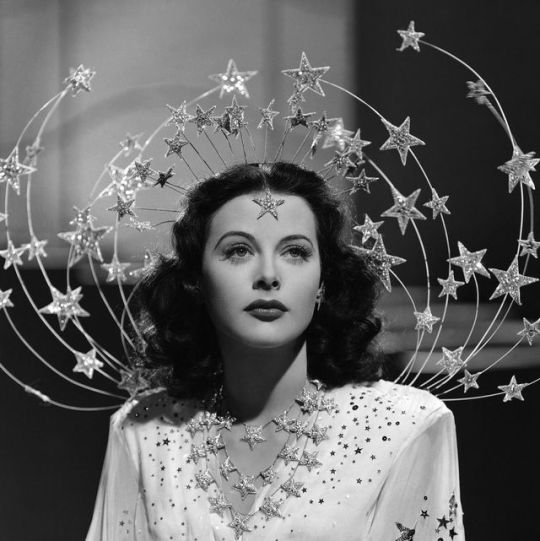

Propaganda
Hedy Lamarr (Samson and Delilah, Ziegfeld Girl)—Look. I'm sure someone has already submitted Hedy Lamarr because she was spectacularly beautiful, and a very strong lady too: she fled both an abusive marriage AND nazi persecution at a very young age and rebuilt a life for herself pursuing her love for acting all on her own!! Her career as an actress was stellar; while she began acting outside of Hollywood (her very first movie, Ecstasy, won a prize at the Venice Film Festival), she conquered American hearts very quickly with her first movie in the US, Algiers, and then just kept getting better and better. If all this isn't enough, she was also an inventor: her invention of the frequency-hopping spread spectrum radio transmission technique forms the base of bluetooth and has a lot of applications in all kinds of communication technologies. I think that deserves a prize, don't you?
Sonja Henie (Thin Ice, Happy Landing)—no idea if she counts, she's a famous skater more than anything else, but count her for the lols and i'll send you some thin mints
This is round 1 of the tournament. All other polls in this bracket can be found here. Please reblog with further support of your beloved hot sexy vintage woman.
[additional propaganda submitted under the cut]
Hedy Lamarr:
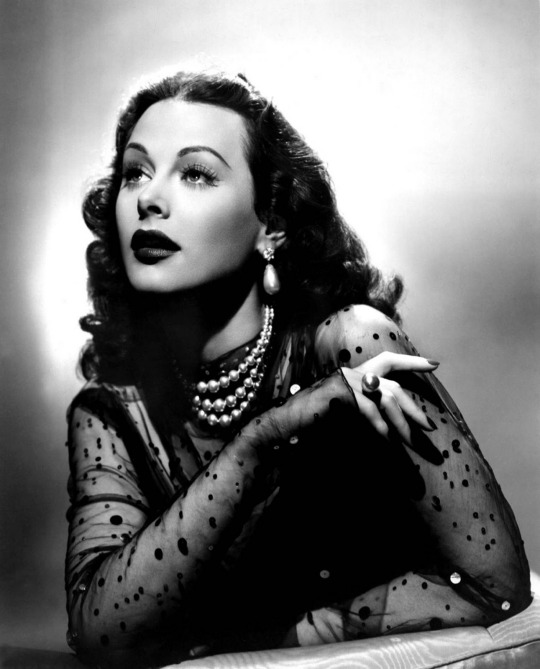
The only person you can find both on the Hollywood Walk of Fame and in the Inventor's Hall of Fame--her radio-frequency-hopping technology forms the basis for cordless phones, wi-fi, and a dozen other aspects of modern life. She was also passionate in her efforts to aid the Allies in WWII (unsurprising for a Jewish-Austrian Emigree to America), and her name served as the backbone for one of the best running jokes in what is possibly Mel Brooks' best movie. Look, Louis B. Mayer apparently believed he could plausibly promote her as "The world's most beautiful woman". Is an entire website full of people going to be less audacious than one Louis B. Mayer? I didn't think so!
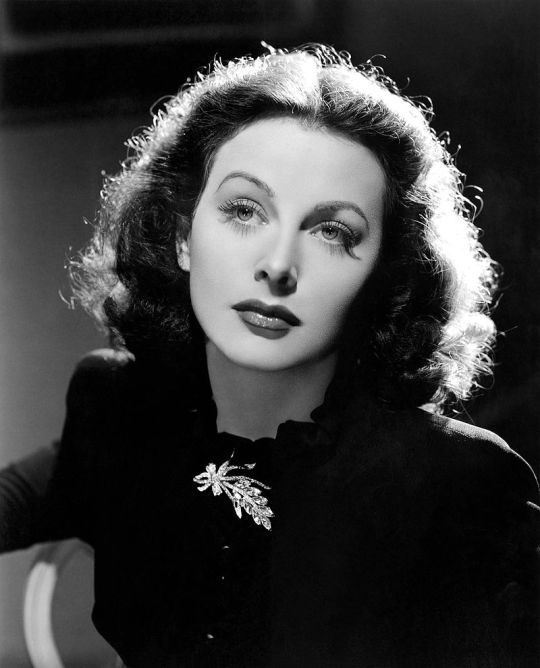
Described as "Hedy has the most incredible personal sophistication. She knows the peculiarly European art of being womanly; she knows what men want in a beautiful woman, what attracts them, and she forces herself to be these things. She has magnetism with warmth, something that neither Dietrich nor Garbo has managed to achieve" by Howard Sharpe, she managed to escape her controlling husband (and Nazi Germany) by a) Disguising as her maid and fleeing to Paris or b) Convincing the husband to let her wear all of her jewelry to a dinner, only to disappear afterwards. Also she was particularly clever and helped develop Frequency-Hopping Spread Spectrum (I can't really explain it but anyway...)
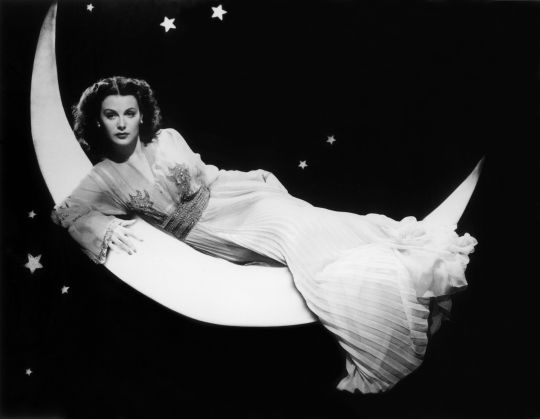
One of the most beautiful women ever in film, spoken by many critics and fans. Beautiful shapely figure, deeper seductive voice, and often played femme fatale roles. She was also brilliant and an inventor. Mainly self-taught, she invested her spare time, including on set between takes, in designing and drafting inventions, which included an improved traffic stoplight and a tablet that would dissolve in water to create a flavored carbonated drink, and much more.
Her depiction of Delilah and Samson and Delilah just lives rent free in my head. The woman was gorgeous.
Gorgeous and brilliant pioneer of modern technology and the middle part.
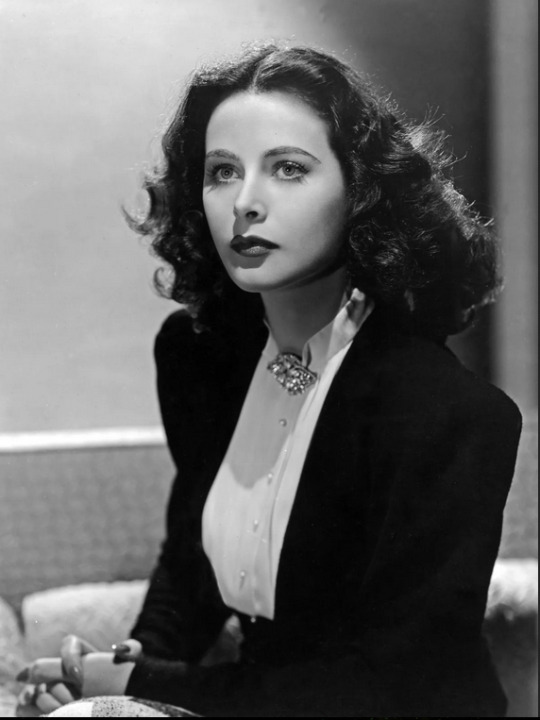
914 notes
·
View notes
Text
Lost in Translation (2003)

"Couple of things. Taking a break from my wife, forgetting my son's birthday. And, uh, getting paid two million dollars to endorse a whiskey when I could be doing a play somewhere. But the good news is, the whiskey works.”
Quick, name the most hipster country!
The Netherlands, I heard someone say in the back row. For the bike infrastructure and urbanism. Very true, very good. Anyone else? The United States, a multifold country full of division no doubt, but also home to the very cities that originated the hipster. Quite fair. Denmark? Inventors of hygge? France, especially Paris? Why not.
There was a time we might have said Japan, and that time was 2003.
Here’s my theory. After WWII, both “The West” (a nebulous concept at best) and Japan both had to rebuild. North America chose economic force, industrialization, conformity, nose-to-the-grindstone work ethic, suburbanism, the detached house, the car, the white picket fence. Japan chose economic force, conformity, nose-to-the-grindstone work ethic, urbanism, the apartment, the high-speed train, the neon sign. In other words, enough similarity to work together economically while also dangling enough of a hook of alternative placemaking to temptingly make it look like an alternative to the mainstream. I think that might be why Murakami became popular with hipsters. I’ve talked about Murakami way back at the start of Project Hipster, before I was adding playlists and holding myself to a thousand-word minimum, and I will write about him again, in time. Over the 21st century so far I think the knowledge of Japan’s pretty oppressively conformist work culture has spread and killed that fetishistic fascination a bit. I mean, Japan’s still cool, I’d love to visit, but there’s definitely less of a “we ought to follow these Exotic Foreign Ways” than there was when we still called anime “Japanimation,” and when Sophia Copolla could make a movie just about sad white people hanging out in Tokyo.
Okay, so that’s reductive. And so was everything I wrote about America and Japan up there. Because if anticapitalist hipsters were fetishing Japan, at the same time, the Reaganite yuppies of America in the late century were chasing the economic powerhouse of Japan, and obviously hipsters ought to be against that. Can two dichotomies exist in an opposing dichotomy? What is that, a tetrachotomy? Or I guess it’s just the contradictory complexity of reality.
Case in point: Lost in Translation starts with a long, long shot of Scarlett Johansson’s butt. At first analysis we’d think, “ah, the males are gazing.” But of course the director is a woman, Sofia Coppola, of that first family of film that gave the world Megalopolis. Is she just trying to ape her male contemporaries? Or is this irony of the school of making the viewer look too long at what they think they want, making it painfully awkward and forcing us to question it? I can accept that. Johansson’s character is, throughout the movie, trying to break out of a sort of trophy-wife passive role. It’s a very passive movie in general, though, in a Japanese sort of way, so the breakout is subtle.
After the butt, as the shoegazey driving sound of Death in Vegas’s “Girls” comes in, we’re introduced to Bill Murray’s already sort of haggard face against a taxi window, playing Bob Harris, though at first he’s just eyes gazing wearily but in awe at the neon bombast of a Tokyo street. We mostly follow Bob for a while, a washed-out American movie star shooting whisky commercials abroad. Here we feel the gaze of the camera again, with uncomfortably– or perhaps comically– long scenes of Murray having to pose with a whisky glass according to convoluted but largely unclear instructions, the nuance of direction lost in transl… hey, that’s the name of the movie! His wife is practically estranged back home, faxing (faxing!) him for his opinions on ikea shelves. He wanders the hotel, looking out over the city lights, in slow, methodical moments. It’s all very Murakami again, down to the whisky and the enigmatic red-haired woman crooning “Scarborough Fair” in the rooftop bar. A lot of the miscommunication is funny, but more in a solemnly wry sort of way. The first time I watched Lost in Translation, Netflix listed it as a comedy, and I don’t think that’s quite right. But it’s not quite wrong. Murray does have his trademark moments of physical comedy, like getting stuck on an elliptical, but Ghostbusters this is not. Even that elliptical moment occurs in a wide and lingering shot of Bob exercising alone in front of windows looking out over the city, and there’s a touch of tragicomedy to it.
Meanwhile, fellow sad white wayfarer Charlotte (Johansson) wanders Tokyo, pulled between the solitude of tradition and the shallow showbiz self-help world of her kinda shitty music photographer husband (wait, hang on, is that the CEO from Avatar?)
He’s in a midlife crisis. She’s in a quarterlife. They meet in that rooftop bar, over those whiskeys, with that singer, looking over those lights, and the worlds collide. You’d think it’d be a romance from here on out, and it kind of is, but kind of not really. The age gap might be weird but it’s mostly just friendly and doesn’t go that far, though they flirt with the expectations. It’s more about connection among those alienated from the consuming international consumerist culture that surrounds them, and what’s more hipster than that?
Oh, yeah, and all this time they are both still married. There’s this godawful tweet that keeps resurfacing in ever-more-compressed screenshots like a sewer backup, that all adult literature is about sad people having affairs. Mostly that’s just utterly wrong. Sometimes it is true (I’m going to write about The Unbearable Lightness of Being soon enough here and you’d better believe it’s true in that case.) Here it almost is true. But even so, what does that structure of forbidden connection say about people? What’s in the details? It’s all in the details. And here, the slow, atmospheric, naturally neon-lit details, washed in a dream-pop soundscape, make the movie. I’m more fond of it now that I’ve written about it. That does seem to happen.
I give this hipster movie four rooftop whiskeys out of five.
Project Hipster is a futile and disorganized attempt to dive into the world of things that the internet has at some point claimed "are hipster," mostly through ListChallenges search results.
This review comes from the eighteenth list, Google's Ultimate List of Films For Hipsters.
Up next: a fairly short and easy book that I made myself struggle with for a particular linguistic reason.
Stay deck. Domo arigato.
#lost in translation#movies#hipster#project hipster#long posts#sofia coppola#bill murray#scarlett johansson#Spotify
3 notes
·
View notes
Text

Calling Doctor Hep Cat
'Jive talk wasn't born on the radio, but it was disseminated through the radio. Young people heard it on the radio, emulated it and spread forth a cultural phenomena. There were DJs that used jive talk and DJs that invented it. Dr. Hepcat was an innovator.
When jive talk began is unknowable. But Cab Calloway wrote his Hepsters Dictionary, a guide to jive talk , in 1938. He even distributed copies to some libraries personally. It cemented jive talk as a convention. Durst published his own jive-talk tome in 1953, The Jives of Dr. Hepcat. [I want this book so bad] When white DJs began adopting black slang, writer Nelson George called it "broadcast blackface."
Dr. Hepcat was a popular KVET-AM DJ. He played records that would later be called Rhythm and Blues, bebop, and even rock n' roll. Also known as Albert Lavada Durst, he was based around Austin and used a fast-paced brand that probably was influenced by his time announcing baseball games for the "colored leagues. He had a slang all his own as a sports announcer. For example he called a Left-handed pitcher a "sand man." No particular reason... he just did. His version of the lords prayer was classic:
"I stash me down to cop a nod. If I am lame I'm not to blame - the stem is hard. If I am skull orchard bound don't clip my wings no matter how I sound. If I should cop a drear before the early bright - when Gabe makes his toot - I'll chill my chat, fall out like mad with everything allroot."
1300 KVET was founded by a group of ten WWII veterans in 1946. They were much more interested in commerce than race. Austin is a very liberal city, the tradition stretches back a ways. As was common in the 40s and 50s, KVET was a full service radio station. They offered a little of everything: music, Mutual Network news, talk, etc. But KVET also offered uncommon programming: Spanish language news and music programming for the African-American community on "The Elmer Akins Gospel Train".
He retired in the 1970s to become a minister at a church in Austin. In 1978, the Warner Brothers trade magazine Wax gave Durst credit for being among the inventors of rock radio. Reverend Albert Lavada Durst died October 31, 1995 in Austin at the age of 82.'
POSTED BY JOSE FRITZ AT THURSDAY, JULY 17, 2008
4 notes
·
View notes
Text
EVERYTHING EVERY TIME ALL IN ONE PLACE
Playing wide in the multiplexes right now:

Here--A spot in a living room in an upscale eastern Pennsylvania suburb--that's the title locale of this latest from Robert Zemeckis. It's our static vantage point for, essentially, the whole movie, looking across the room through a picture window that offers a view of the big brick colonial-era house across the street.
We see the view there before it was a living room--long, long before. As in, we see it during the extinction event that ended the Cretaceous Period, sixty million years ago. We see it as a woodland make-out spot for indigenous lovers (Dannie McCallum and Joel Oulette), and as a burial site. We see it as part of a dirt road leading up to the aforementioned historic manse, which once was occupied by William Franklin (Daniel Betts), estranged Loyalist son of Benjamin (Keith Bartlett).
After the house is built, we get glimpses of the lives of its early 20th-Century inhabitants, like an enthusiastic aviator (Gwilym Lee) whose wife (Michelle Dockery) frets about his flying. They're followed by a whimsical inventor (David Fynn) and his sexy flapper wife (Ophelia Lovibond). This guy is trying to perfect a reclining chair; his working title for it is "Relax-y-Boy." And we see the house's early 21st-Century occupants, an African-American family; Nicholas Pinnock and Nikki Amuka-Bird are the parents, and Anya Marco-Harris is the beloved housekeeper.
But the movie's main focus is the midcentury family that takes the place over after WWII: Dad (Paul Bettany), a combat veteran and a seething, disappointed functional alcoholic, his sweet, quietly unfulfilled wife (Kelly Reilly), and his oldest son (Tom Hanks), an aspiring artist. The son gets his beautiful girlfriend (Robin Wright) pregnant, so there goes both art school and her college dreams. They move in with the parents, and stay for decades.
So the movie packs in a lot of history (and prehistory), a lot of longings fulfilled and unfulfilled, and cultural references ranging from the Spanish flu to the Spanish Inquistion sketch from Monty Python. But I'll admit that when I realized we were going to be parked in one place for the whole thing--I went in not knowing this--I panicked for a moment.
I needn't have worried. Zemeckis has always been a skillful showman, and while the audacious experiment of Here is by no means an unqualified success, it certainly never bored me. The script, by Eric Roth and Zemeckis, is based on a 2014 graphic novel by Richard McGuire, and Zemeckis employs comic-book techniques like overlapping inset panels to interweave the various timelines and bounce them off each other thematically. It's an impressive and confident exercise in narrative, and it does carry a cumulative emotional punch.
There are downsides, however. The fixed point of view means that the actors tend to seem a bit far away from us a lot of the time, and when they are brought up into the foreground it somehow feels forced. Zemeckis may have been worried about this distancing too; Alan Silvestri's music, though pretty, is ladled on a bit thicker than it should be, as if to telegraph what we're supposed to be feeling.
Much more jarringly, though, the people in Here often have an ersatz, CGI "Uncanny Valley" look to them. The leads were taken all the way back to teenaged through some sort of real-time computer tech, and while the results are tolerable, they aren't perfected in realistic terms.
It must be admitted, however, that Hanks and Wright transcend this limitation, especially Hanks. The other actors sometimes feel like cyber-phantoms, but Hanks is so vibrant that he can project his humanity right through the program. And after Apollo 13, Castaway, Captain Phillips and Sully, it's also a relief to see the poor guy stay put.
#here movie#robert zemeckis#eric roth#tom hanks#robin wright#richard mcguire#paul bettany#kelly reilly#michelle dockery#ophelia lovibond#alan silvestri#nikki amuka bird#joel oulette#dannie mccallum
2 notes
·
View notes